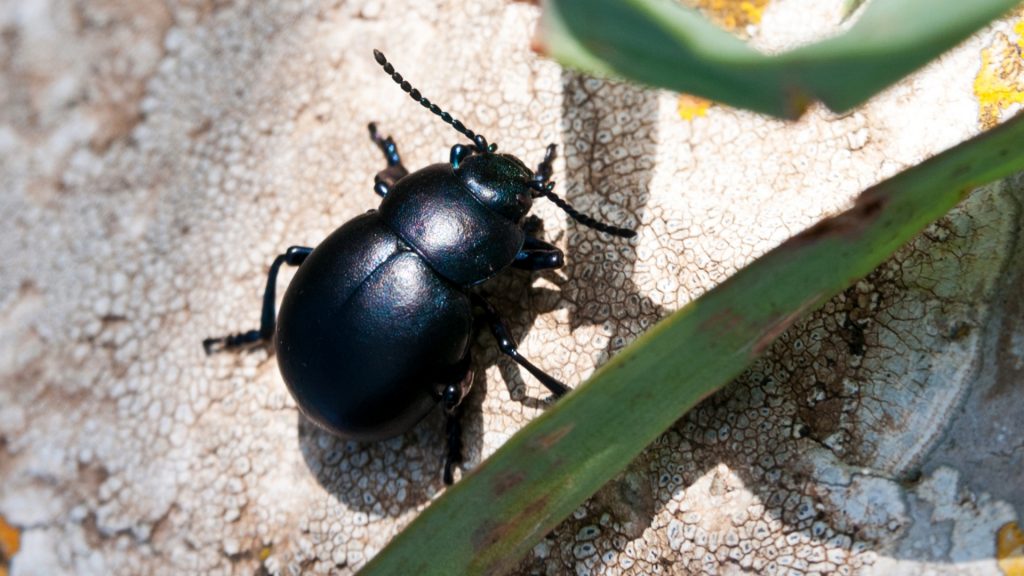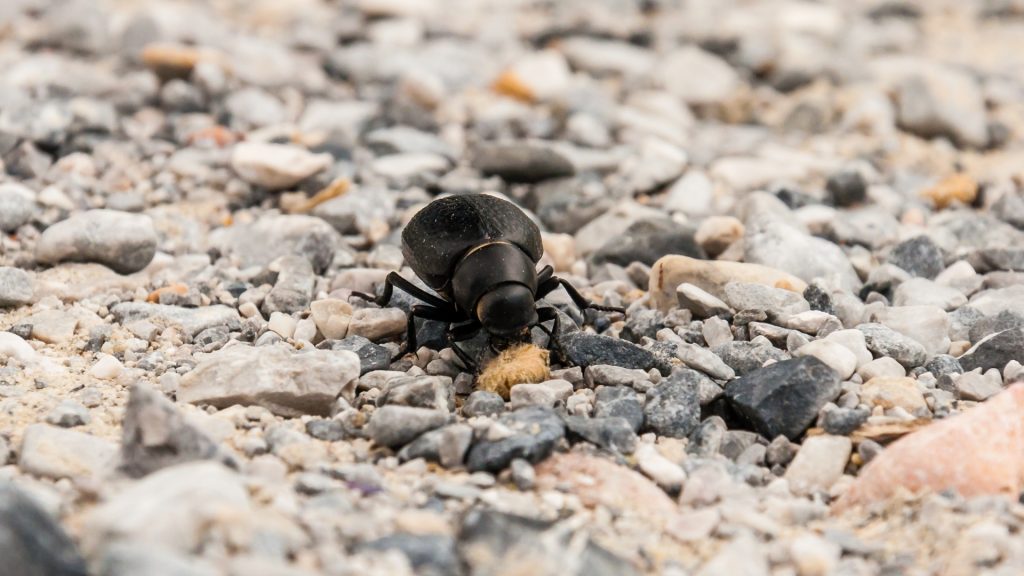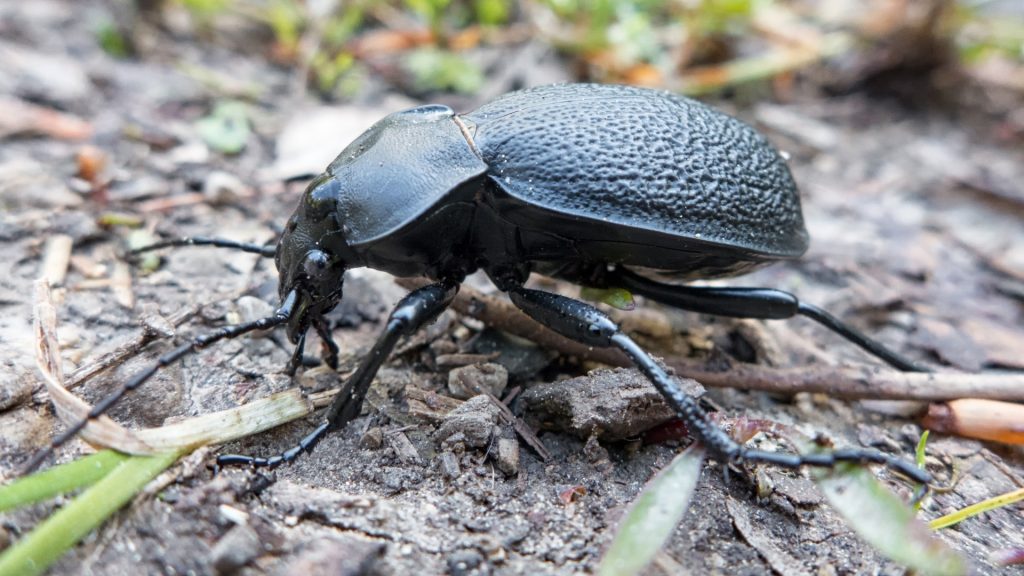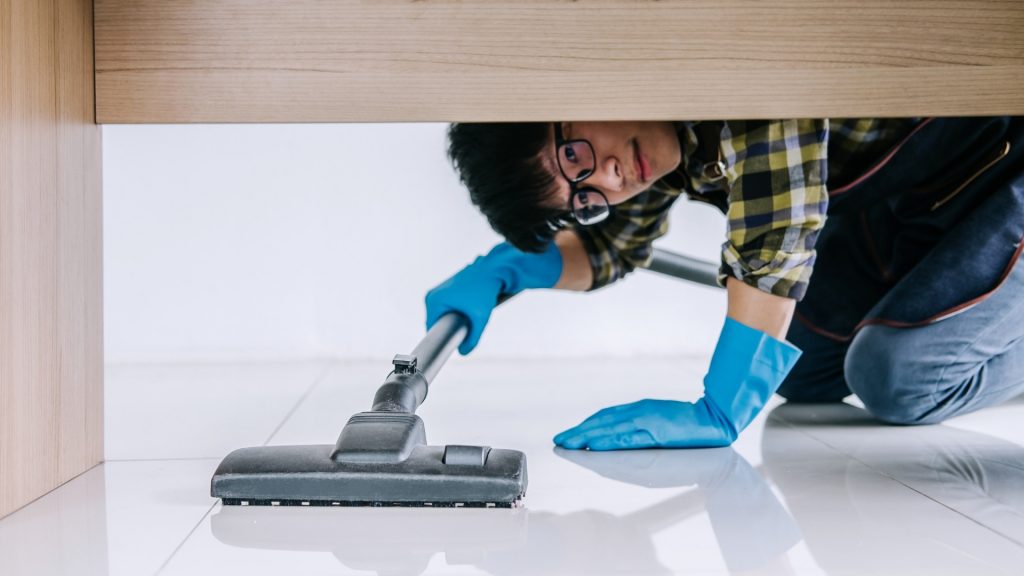Whether they’re in your kitchen, bathroom, swimming pool, or garden, it’s no surprise that everyone wants black beetles gone. But different types of black beetle bugs may require different attacks.
So, how to get rid of black beetle? To get rid of the black beetle, locate all the black beetle-infested items in your home. Check your house if the issue has become a black beetle infestation. To fully remove them, vacuum your home thoroughly. Then, discard all the infected items immediately so it’ll stop them from spreading further.
If black beetles have invaded your home, don’t despair! They can be a problem, but we have solutions. This article will show you how to kill black beetles in your house.
What Is a Black Beetle?

Black carpet beetles (Attagenus unicolor) are common and destructive household pests. When you see these little black beetles in your home, your furs, feathers, fibers, and grain products are at risk. They’ll also chew on your wool carpet and take up housekeeping in your cereal box.
What Do Black Carpet Beetles Look Like?
An adult black carpet beetle is between ⅛ to 3/16 inch long, with a shiny dark-brown to black oval body. Black carpet beetle larvae look like armored segmented carrots with bristly hairs. They’re rusty reddish-brown with a tuft of spiky hairs protruding from their bottom.
Are Black Beetles Harmful?
These tiny black beetles don’t bite humans at any stage in their life cycle. And by the time you see them in your home, they’re no longer eating your clothing or furniture. The real damage comes from the baby black beetles.
While they’re still growing larvae, baby black carpet beetles can eat unsightly holes in clothing and furniture. And because they hide in dark enclosed places, they can go unseen until they’ve done significant damage and infested your entire home.
Related: Are Carpet Beetles Harmful? | Important Facts!
How Long Do Black Beetles Live?
Black carpet beetle eggs hatch 9 to 16 days after laying. The black carpet beetle spends 166 to 310 days in this larval stage, eating carpets, cushions, and sweat stains until it grows to about 1/4 inch (0.64 cm) long. Then it forms a hard pupa (cocoon).
Adult beetles emerge between eight and 14 days after pupation, but they only live a few weeks. They may eat a little bit of flower pollen or an occasional petal, but many don’t eat at all. Their only thought is to find a mate and hatch a new generation.
What Do Black Beetles Eat?

Black carpet beetle larvae feed on natural fibers and grains. Because they’re scavengers who eat dander and animal debris, baby black carpet beetles will also chew on synthetic fibers with oil, sweat, or food stains.
Types of Black Beetles
When exterminators get calls about flying black beetle bugs, black carpet beetles are usually the problem. But there are other types that may bring homeowners grief.
If you’re wondering what the black beetles are in your house, we can help you distinguish between a black carpet beetle, boatswimmer, weevil, or other unwanted beetle guests.
Related: How Do You Tell if It’s a Beetle or Cockroach in Your House? | Identification and Guide
What Causes Big Black Beetles in Home?
Black ground beetles want only to stay in your yard and eat garden pests. But when their pest-hunting accidentally leads them into houses, they often get mistaken for giant cockroaches.
The main difference between the two is that the black ground beetle is 4 to 8 times larger than a black carpet beetle, and black ground beetle larvae live in soil, not carpets.
To keep black ground beetles out, caulk up any gaps in your window frames. Move leaf and rubbish piles as far away from your house as you can. They’d rather be outside where they can lay their eggs in the dirt. Give ground beetles distance, and they’ll keep theirs.
What Attracts Black Beetles?

Black beetles, like other insects, are attracted to food and shelter. If they discover things they can eat in your home or places to lay their eggs, they’ll stay.
How Do Black Beetles Get in the House?
In springtime, adult black carpet beetles may fly into your home through a doorway or open window. Once there, the female black carpet beetle may lay eggs in food sources like your carpet or couch. Or she may wander to a dark and secluded area where her eggs can safely brood until hatching.
If you bring a box of old woolens or fabric into your house from the shed, you may introduce black carpet beetles, as they’ve also been known to enter homes in bags of dog food or other stored products.
How To Get Rid of Black Beetle Infestation? Step by Step Instructions

If you’ve just discovered damage to your carpet or your stored clothing, you may be dealing with black carpet beetles, and you want to know how to get rid of them quickly.
Here’s a step-by-step guide to handling your black carpet beetle problem:
1. Locate All Black Beetle-Infested Items
Examine the seams, folds, and creases of your stored items. Look closely for any dried larva skin sheds or tiny wiggling worms buried in the fabric. Check the edges of your carpeting for bare spots or signs of larva-nibbling. Pay close attention to woolen or fur items.
2. Check Your Home for Black Beetle Infestation
Check furniture cushions and upholstery. Look around floor vents and ducts, especially if they’re covered in lint or pet hair. Check your pantry, especially your grain-based products and your pet’s food dish.
3. Vacuum Your Home To Remove Black Beetles
Vacuum your apartment thoroughly, paying close attention to upholstered furniture and carpets. Make sure you get corners and baseboards, as these are favorite hiding places for carpet beetles and other insect pests. Also, vacuum every nook and cranny of your closets and clothing storage areas.
4. Clean or Discard Carpet Beetle Infected Items
Separate any clothing or items that may be carrying black carpet beetle larvae into a keep and a discard pile. Bag the discard items, and get them out of your house as soon as you can.
This will help stop the further spread of the beetles. Dry-cleaning or running your items through a hot dryer will kill any remaining eggs and larvae.
How To Get Rid of Black Beetles in Some Specific Places?
There are many different black beetle pests and black beetle bugs. Here are some other places you might find black beetles and some quick ways to get rid of them.
How To Get Rid of Black Beetle in House (Apartment)?

After you finish following the steps above, you need to keep your stored clothing safely sealed away. You’ll need to vacuum your carpets and your upholstery regularly. The best way to win the war against black beetles is to avoid playing it.
Related: Cockroaches in Apartment | Causes, Prevention, and Treatment
How To Get Rid of Black Beetles in Swimming Pool?
If you see small black beetles in your swimming pool, you have either water boatmen or backswimmers. The water boatman (Corixa punctata) ranges between ⅕ and ½ inch long and has long hind legs that help it swim.
Backswimmers (Family Notonectidae) look like water boatmen but swim on their backs. Water boatmen eat algae, and backswimmers eat water boatmen. Be careful handling backswimmers, as they have a sharp beak and can deliver a painful bite.
To get rid of algae—and with it, the black beetles in your pool—do the following steps:
- Give your pool bi-weekly shock chlorination.
- Add chlorine until your water’s chlorine level rises from 1 to 3 parts per million (ppm) to between 6 and 13 ppm.
- Do this at night, and don’t swim until the chlorine is back to 1 to 3 ppm.
How To Get Rid of Little Black Beetles in My Kitchen?

If you opened your flour canister and found it crawling with tiny black beetles, you’re most likely dealing with wheat weevils (Sitophilus granarius), which are about half the size of a black carpet beetle.
If you find wheat weevils in your pantry, you need to throw out any unsealed dry foods. Wheat weevils can eat and lay eggs in oats, rice, barley, flour, cornmeal, pasta, or anything made with grains.
The Seseno Airtight Food Storage Container Set will help keep your grains and grain products safe from wheat weevils.
- Keep your food dry and safe with The SESENO Plastic Food Storage...
- Airtight easy lock lids to seal the container firmly and protect...
- Made of high-quality food grade plastic, BPA-Free, non-toxic and...
- Suitable for Beans, Flour, Sugar, Coffee, Rice, Nuts, Snacks, Pet...
- Set Included: 1 Tall Container, 2 Medium Container, 2 Small...
Related: Tiny Black Bugs in Kitchen | Control Guide
How To Get Rid of Black Beetles in Garage?
If you have open containers of birdseed or pet food in your garage, you’ll soon attract grain-eating beetles. Keep any food in sealed containers and sweep up or vacuum any food that you spill immediately.
How To Get Rid of Black Beetles in Garden?

When you see a big black beetle crawling around your flowers, don’t stomp on it! Black ground beetle larvae eat grubs and harmful parasites as they burrow through the soil. Adult black ground beetles eat cutworms, asparagus beetles, cabbage worms, and slugs.
Best Chemicals for Black Beetles
For a severe black carpet beetle infestation, insecticides may be necessary. But while insecticides will help get rid of bugs like black carpet beetles, they won’t solve the problem unless you also take other steps.
If at all possible, avoid spraying insecticides in pantries or near food storage. These areas are prone to bug infestations, and spraying is tempting. But the risk of exposing yourself and your family to unhealthy levels of pesticides is too high.
Food grade diatomaceous earth like the Harris Food Grade Diatomaceous Earth Powder is non-toxic to humans (some people even take it as a food supplement!). But its tiny sharp edges kill insects. Powdering your home with diatomaceous earth is a much safer way of controlling beetle infestations.
- Natural Product - Composed of 4lbs of 100% ground freshwater...
- OMRI Listed - Listed with the Organic Minerals Research...
- Powder Duster Included - Powder duster in the bag for easy and...
- Supports a Great Cause - Harris donates a portion of profits to...
- Made in the USA – Mined in Nevada and packaged in Georgia
Best Black Beetle Spray
The Reefer-Galler SLA Cedar Scented Spray is a potent insecticide that will kill black carpet beetle larvae hiding in your baseboards and closets. If used with caution and according to the manufacturer’s instructions, it can play a critical role in ending your black carpet beetle problems.
- REEFER GALLER SLA SPRAY: This cedar scented insect killer spray...
- KILLS CLOTHES PESTS ON CONTACT: This Reefer Galler pest control...
- CEDAR SCENTED: The cedar scented insect spray ensures worry free...
- SAY GOODBYE TO INDOOR BUG PROBLEMS: Flies, bees, cockroaches,...
- WILLERT HOME PRODUCTS: Willert Home Products began in 1946 with a...
Best Black Beetle Repellent
Diatomaceous earth will help keep black carpet beetles from gaining a foothold in your woolen closet. Another insect repellent you can try is boric acid. The Harris Boric Acid Roach and Silverfish Powder will also kill carpet beetles.
- Long Lasting - Continues to kill roaches, palmetto bugs, water...
- Fast Acting - Insects coming into contact with the powder will...
- Easy Application - The puffer bottle makes application quick and...
- Contains Irresistible Lure - Harris food grade lure attracts...
- EPA Registered - Made in the USA & Registered with the...
Home Remedies for Black Beetles
Steaming your upholstered furniture and carpets can nip carpet beetle infestations in the bud efficiently. This is because the high heat can ultimately kill carpet beetle eggs and larvae.
While essential oils are of limited use against carpet beetles, you may find that a mixture of 5 drops of peppermint oil and 5 drops of clove oil in a pint of water makes a scent that carpet beetles hate, but you adore.
- 100% Pure & Natural Peppermint Essential Oil - Artizen Essential...
- Ideal for Aromatherapy, Candle & Soap Making: Add a few drops of...
- Most 4 Ounce Peppermint Oils Contain Less Than 1/3 Natural Oil -...
- Glass Bottles with Eyedropper - Our high-quality glass bottles...
- Seeking Calm? Relax with Artizen - We create the perfect...
- Pure & Natural Clove Essential Oil: Artizen Essential Oils stand...
- Avoid Cheap Diluted Clove Oil: Unlike competitors that dilute...
- High Natural Oil Concentration: Many 4-ounce clove essential oils...
- Premium Glass Bottles With Eyedropper: Our high-quality glass...
- American-Based Quality Assurance: Bottled in the USA, Artizen...
How To Keep Black Beetles Away?
Dry-clean or launder items before you store them. Keep stored things in tight-fitting plastic bags or sealed containers. You can also store furs and other valuable garments in cold vaults. Ask your local furrier or dry cleaner for more information.
Black carpet beetle larvae eat dust and dander. The less dust and pet hair around your house, the less chance you have of an ongoing black beetle infestation. And because vacuuming sucks up eggs and larvae, black carpet beetles don’t damage regularly vacuumed carpets.
List of Sources
Bailey, S. (1993). Ground Beetles.
Gallhoff, J. (1997). Black Carpet Beetle.
Jacobs, S. (2017). Black Carpet Beetles.
Potter, M. F. Carpet Beetles.
- Bed Bug Surge 2025: How to Detect, Prevent, and Safely Eliminate Infestations in Top U.S. Cities - June 18, 2025
- Asian Needle Ants Invade US Homes: 2025 Guide to Identification, Risks, and Effective Control - June 11, 2025
- New World Screwworm Alert: How US Livestock Owners Can Prevent Outbreaks and Protect Herds [Summer 2025 Update] - June 8, 2025






